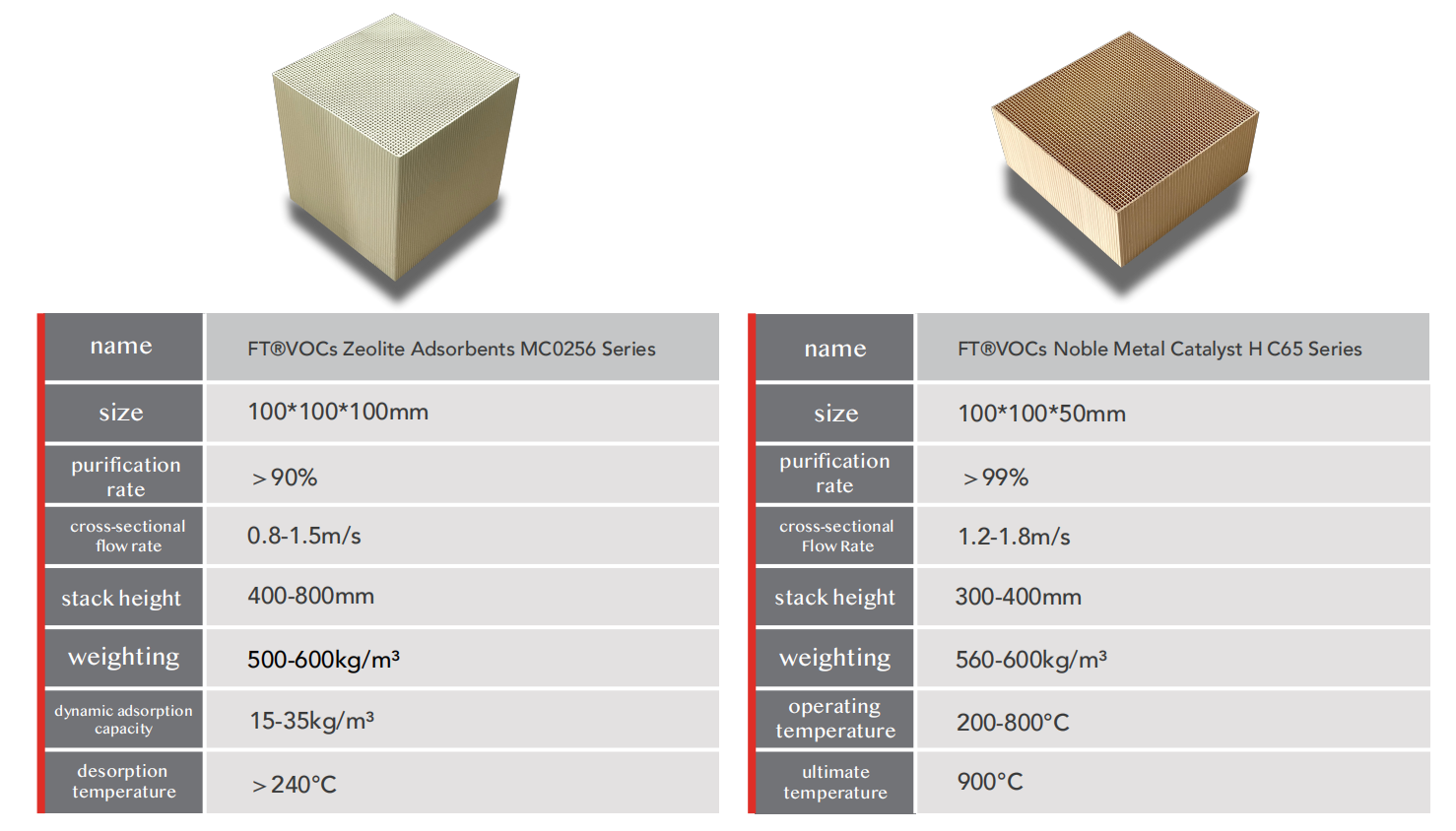Paint manufacturing industry
As a key industry in national air pollution control, the paint manufacturing industry has seen over 50 technical specifications, regulations, and other guidelines issued by domestic and international authorities and local governments as of 2019.
The paint manufacturing industry generates exhaust gases characterized by low concentrations and high volumes.Most manufacturers operate on an intermittent basis, and the solvent compositions are quite complex, making treatment costly. Additionally, the mixing and grinding processes during paint preparation produce a large amount of fine dust, further complicating the treatment process. Such exhaust gases typically involve compounds like benzene, ethers, alcohols, ketones, and esters.
Features
Multiple collection points with high air volumes ranging from approximately 50,000 m³/h to 200,000 m³/h.
Complex composition primarily consisting of benzene, esters, ketones, and ethers.
Intermittent production with a large number of reaction vessels.
Irregular start-up and shutdown schedules.
Overall small emission volume but significant concentration fluctuations.
Common Practices
Activated carbon adsorption-desorption + catalytic combustion
This process is one of the early common VOCs treatment methods. Due to the strong adsorption capacity of activated carbon, it has been widely used for conventional low-concentration exhaust gas treatment. However, activated carbon is flammable, posing potential safety hazards, and has a short lifespan, making replacement costly as hazardous waste. Additionally, with the gradual proliferation of online monitoring and the high removal rate requirements, this process is restricted in use in some specialized industries.
- Zeolite adsorption-desorption + catalytic combustion/RTO
This process uses zeolite as the adsorption and desorption material, primarily in the forms of zeolite wheels, zeolite drums, and zeolite fixed beds for continuous adsorption and desorption. The entire equipment set can maintain a purification efficiency of around 90% for several years. Among these, the zeolite wheel is the most widely used, suitable for continuous operation with stable concentration ratios. However, it has high pre-treatment requirements, is prone to clogging if used improperly, and presents challenges in later maintenance and regeneration.
Given the market conditions, FT Technology recommends using the "Zeolite Fixed Bed Adsorption Concentration + Catalytic Combustion Technology." This approach involves adsorbing and desorbing exhaust gases using zeolite adsorbents, then decomposing the concentrated exhaust gases using catalytic combustion. The heat generated in this process returns to the zeolite fixed bed to continue desorption. This method eliminates the need for heat exchange equipment and significantly reduces energy consumption by achieving thermal energy internal circulation.
Since the zeolite adsorbent is a high-temperature-resistant porous structure, it can continuously adsorb and undergo high-temperature desorption without fire risk. During use, maintenance can be performed through high-pressure gas purging and water washing.
Recommended Products

New Trends
The zeolite adsorbent MC0256 series is suitable for zeolite fixed bed adsorption and concentration + catalytic combustion or zeolite fixed bed adsorption and concentration + RTO;
Noble metal catalyst HC65 series products are suitable for activated carbon adsorption and desorption + catalytic combustion, zeolite rotor adsorption and desorption + catalytic combustion, zeolite fixed bed adsorption and desorption + catalytic combustion.
With the gradual popularization of low VOCs materials, water-based coatings and UV coatings have become a new trend in the market, and the VOCs volatilization during the production of water-based coatings is extremely low (generally less than 50mg/cubic meter).VOCs volatilization during the production of water-based coatings is very low (generally less than 50mg/cubic meter), and zeolite honeycomb is more suitable for the treatment of such ultra-low concentration of exhaust gas. In addition, photoinitiators in UV coatings can rapidly generate free radical ions under UV light.
In addition, the photoinitiator in UV coating can generate free radical ions rapidly under UV light, thus triggering the polymerization and cross-linking of the resin and active monomer, which requires regular high temperature regeneration after long-term adsorption and desorption. After long-term adsorption and desorption, regular high-temperature regeneration is required.
At present, zeolite fixed bed adsorption and desorption has become the main process to solve the above two kinds of waste gas.

